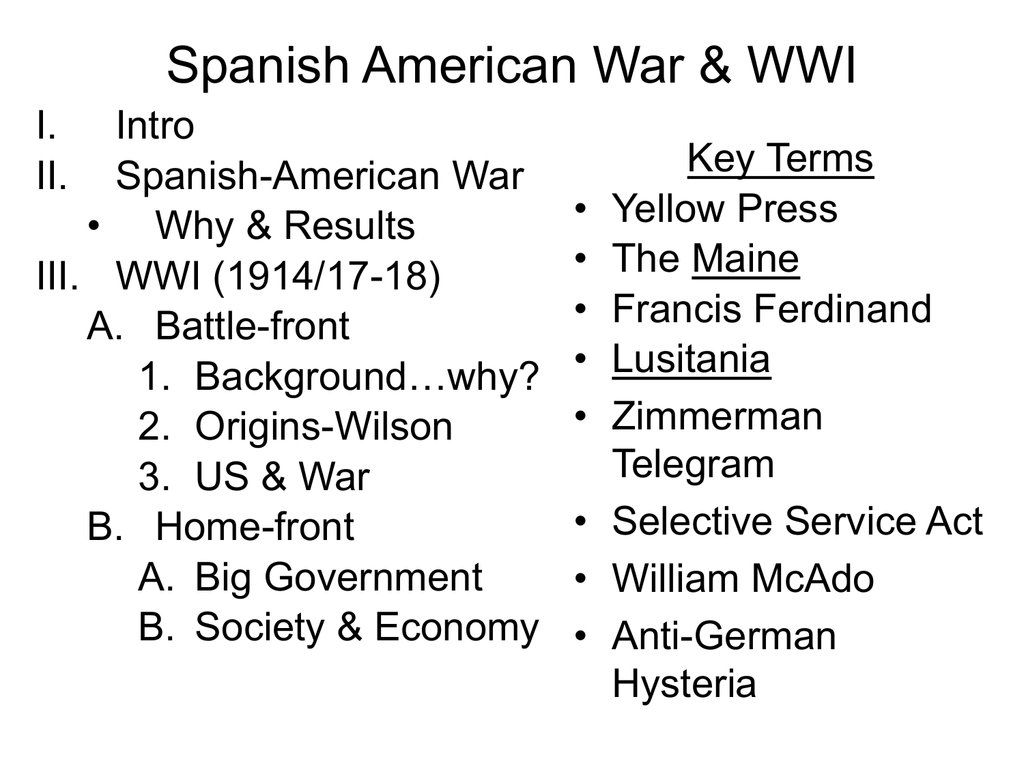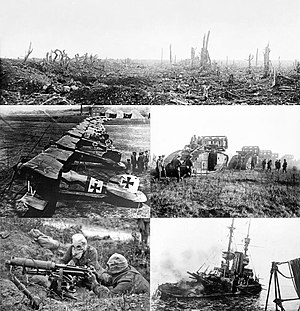
The results of World War I could be argued as an intermission into World War II but the purposes of each war was different, and though most of the same countries were included in the second war, many countries were dragged in by allies. Gas terrified soldiers in WW1, but it killed comparatively few of them, at least on the Western Front. So why was it the one WW1 weapon to be banned? An early form of tear gas. But the results. Results and Aftermath of World War II. After the end of the war, a conference was held in Potsdam, Germany, to set up peace treaties. The countries that fought with Hitler lost territory and had to pay reparations to the Allies. Germany and its capital Berlin were divided into four parts. WW1 caused the downfall of four monarchies: Germany, Turkey, Austria-Hungary and Russia. The war made people more open to other ideologies, such as the Bolsheviks that came to power in Russia and fascism that triumphed in Italy and even later in Germany. The war lasted exactly four years, three months and 14 days. Before World War II began in 1939, World War I was called the Great War, the World War or the War to End all Wars. 135 countries took part in World War I, and more than 15 million people died.
After the end of the war, a conference was held in Potsdam, Germany, to set up peace treaties . The countries that fought with Hitler lost territory and had to pay reparations to the Allies . Germany and its capital Berlin were divided into four parts. The zones were to be controlled by Great Britain, the United States, France and the Soviet Union. The three western Allies and the Soviet Union disagreed on many things and as time went on Germany was divided into two separate countries : East Germany , which had a Communist government and West Germany, which was a democratic state . Berlin was also divided into East and West Berlin. Austria was also occupied by the four Allies from 1945 to 1955.
One by one, the Russians started to take over countries in eastern Europe and install Communist governments there. The division of Europe was the beginning of the Cold War, between the democratic nations of the west and the Communist countries of eastern Europe. The Iron Curtain marked the border between these two regions.
German occupation zones after World War II
After the war many Nazi leaders were arrested and punished for what they had done in the war. The most famous war trials were held at Nuremberg, Germany. Those who were responsible for brutal crimes were sentenced to death.
Many problems arose after the war was over. One of them focused on the city of Berlin which was deep inside the Russian zone. In June 1948, the Soviet Union tried to drive the western powers out of Berlin by blocking all routes to the city. For a whole year the Allies flew in food, fuel and other things that the population needed to survive . Finally , the Russians gave up and the blockade ended. In 1961 the Russians built a wall around Berlin to stop their citizens from escaping to the west.
The biggest task was to rebuild Europe, which lay in ruins . In 1948 the United States set up the Marshall Plan to help Europe’s economy . 18 nations received 13 billion dollars worth of food machines and other goods .
During World War II , four of the Allied powers—the United States, Great Britain, the Soviet Union and China— agreed to create an organization that should work for peace . In April 1945 fifty countries signed a charter and gave birth to the United Nations.
Division of Europe : the free western countries (blue) and Coimmunist Eastern Europe (red) - grey countries are neutral
World War II - Table of Contents
Online Exercises
Related Topics
Words


- Allies = the countries that fought against Germany in the Second World War
- arise—arose-arisen = to come up, begin
- arrest = if a person is taken to a police station because they may have done something against the law
- billion = one thousand million
- border = line between two regions or countries
- charter = a set of rules that countries agree on
- citizen = a person who lives in a country and has rights there
- create = start, make
- disagree = to have a different opinion , to quarrel
- divide = split, break up into
- economy =the buying and selling of goods in a country
- escape =to get away from
- focus = concentrate on
- fuel = coal, gas or oil that can be burned to make heat
- goods =products that you buy and sell
- government = the people who rule a country
- install = set up
- mark =to be a sign of , to show where something is
- occupy = to send soldiers to a place and have them stay there for a longer time
- peace = opposite of war
- punish =to make someone suffer because they have done something wrong
- receive = get
- reparations = the money the countries that have lost the war have to pay to the winners
- responsible =to blame for something
- routes = here: roads, railway lines, canals, rivers
- ruins =what is left of a building or structure
- sentence = the punishment that a judge gives a person
- separate = single, independent
- set up = organize
- sign = to put your name on a document
- state = country
- survive =to continue to live on after a dangerous situation
- take over = to get power; to start being in control
- task = job, mission
- territory = land
- treaty =a written document between two people or countries
- war trial =people who are responsible for war crimes are put before a court

When war broke out, the Allied powers possessed greater overall demographic, industrial, and military resources than the Central Powers and enjoyed easier access to the oceans for trade with neutral countries, particularly with the United States.
Table 1 shows the population, steel production, and armed strengths of the two rival coalitions in 1914.
| resources | Central Powers | Allied Powers |
|---|---|---|
| population (in millions) | 115.2 | 265.5 |
| steel production (in millions of metric tons) | 17.0 | 15.3 |
| army divisions available for mobilization | 146 | 212 |
| modern battleships | 20 | 39 |
All the initial belligerents in World War I were self-sufficient in food except Great Britain and Germany. Great Britain’s industrial establishment was slightly superior to Germany’s (17 percent of world trade in 1913 as compared with 12 percent for Germany), but Germany’s diversified chemical industryfacilitated the production of ersatz, or substitute, materials, which compensated for the worst shortages ensuing from the British wartime blockade. The German chemist Fritz Haber was already developing a process for the fixation of nitrogen from air; this process made Germany self-sufficient in explosives and thus no longer dependent on imports of nitrates from Chile.
Of all the initial belligerent nations, only Great Britain had a volunteer army, and this was quite small at the start of the war. The other nations had much larger conscript armies that required three to four years of service from able-bodied males of military age, to be followed by several years in reserve formations. Military strength on land was counted in terms of divisions composed of 12,000–20,000 officers and men. Two or more divisions made up an army corps, and two or more corps made up an army. An army could thus comprise anywhere from 50,000 to 250,000 men.
The land forces of the belligerent nations at the outbreak of war in August 1914 are shown in Table 2.
| country | regular divisions (with number of field armies) | other land forces | total manpower | |
|---|---|---|---|---|
| *Restricted in 1914 to service at home. | ||||
| Central Powers | Germany | 98 (8) | 27 Landwehr brigades | 1,900,000 |
| Austria-Hungary | 48 (6) | 450,000 | ||
| Allied Powers | Russia | 102 (6) | 1,400,000 | |
| France | 72 (5) | 1,290,000 | ||
| Serbia | 11 (3) | 190,000 | ||
| Belgium | 7 (1) | 69,000 fortress troops | 186,000 | |
| Great Britain | 6 (1) | 14 territorial divisions* | 120,000 | |
The higher state of discipline, training, leadership, and armament of the German army reduced the importance of the initial numerical inferiority of the armies of the Central Powers. Because of the comparative slowness of mobilization, poor higher leadership, and lower scale of armament of the Russian armies, there was an approximate balance of forces between the Central Powers and the Allies in August 1914 that prevented either side from gaining a quick victory.
Germany and Austria also enjoyed the advantage of “interior lines of communication,” which enabled them to send their forces to critical points on the battlefronts by the shortest route. According to one estimate, Germany’s railway network made it possible to move eight divisions simultaneously from the Western Front to the Eastern Front in four and a half days.
Results Of Ww1 And Ww2
Even greater in importance was the advantage that Germany derived from its strong military traditions and its cadre of highly efficient and disciplined regular officers. Skilled in directing a war of movement and quick to exploit the advantages of flank attacks, German senior officers were to prove generally more capable than their Allied counterparts at directing the operations of large troop formations.

Sea power was largely reckoned in terms of capital ships, or dreadnought battleships and battle cruisers having extremely large guns. Despite intensive competition from the Germans, the British had maintained their superiority in numbers, with the result that, in capital ships, the Allies had an almost two-to-one advantage over the Central Powers.
The strength of the two principal rivals at sea, Great Britain and Germany, is compared in Table 3.
| type | British | German |
|---|---|---|
| *Including Canadian, Australian, and New Zealand destroyers of all classes. | ||
| dreadnought battleships | 20 | 14 |
| battle cruisers | 9 | 4 |
| pre-dreadnought battleships | 39 | 22 |
| armoured cruisers | 34 | 9 |
| cruisers | 64 | 41 |
| destroyers | 301* | 144 |
| submarines | 65 | 28 |
Results Of Ww11
The numerical superiority of the British navy, however, was offset by the technological lead of the German navy in many categories, such as range-finding equipment, magazine protection, searchlights, torpedoes, and mines. Great Britain relied on the Royal Navy not only to ensure necessary imports of food and other supplies in wartime but also to sever the Central Powers’ access to the markets of the world. With superior numbers of warships, Great Britain could impose a blockade that gradually weakened Germany by preventing imports from overseas.